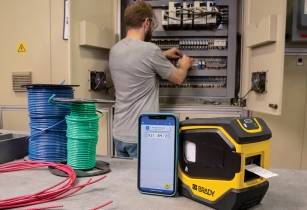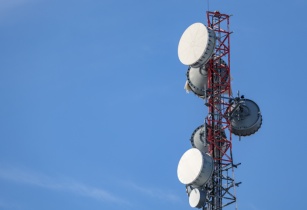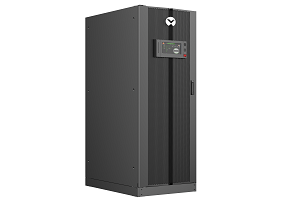When it comes to delivering voice, video and data to mobile subscribers, business enterprises and governments, few areas of the world are more challenging than the African continent.
p>When it comes to delivering voice, video and data to mobile subscribers, business enterprises and governments, few areas of the world are more challenging than the African continent.
Africa's myriad number of countries, diverse economies, and vast and varied terrain have greatly slowed – and often prohibited – the building of conventional wireline infrastructure. That deficiency is why Africa is one of today’s fastest growing markets for wireless technology and an explosive market for microwave radio systems to backhaul traffic fueled by this expansion.
Cases in point:
• Mobile devices – whose numbers are growing exponentially across the continent – have quickly become the only means for providing voice and Internet connectivity in most regions.
• Mobile operators are expected to provide “anywhere, anytime” connectivity and enough bandwidth to support the IP-based applications of today and tomorrow.
• Enterprises in industries such as energy production and mining are “going wireless” to improve efficiency by linking their distributed operations and enabling instant communication with their mobile workforces.
• Government agencies are employing wireless technologies for video surveillance and disaster recovery.
To support these applications and hundreds more, Africa’s network operators and IT executives must build or expand their existing network infrastructures. Their choices are three: lay fibre, lease lines, or deploy microwave radio systems. Trenching fibre remains cost-prohibitive, takes months and may be impossible depending on terrain. Leased lines, if available, are not only costly, but the costs recur monthly – and the network is not under the complete control of its owner.
Next generation communications with microwave
The best and most cost-effective alternative to laying fibre and leasing lines? Microwave radio systems. They are quick to deploy, easy to support and maintain, and accommodate Africa’s unique environmental and economic conditions. However, yesterday’s microwave systems are not the answer.
Why 20th Century Microwave Radio Systems Will Not Work
Microwave radio technology has been available for 50 years, but microwave radio systems that can meet the demands of today’s African wireless market must overcome the weaknesses of their predecessors. These shortcomings include:
• High Cost – Older microwave radio systems were designed to transport telephone voice traffic over long distances (40-80 kilometers per link) in areas not served by wireline infrastructure. They are less expensive than laying cable across the continent, but still a costly investment. Additionally, the operational costs are high because of the requirement for on-site maintenance and configuration.
• Limited Applications Support – These legacy microwave systems, designed to carry only voice, cannot support the mix of TDM and IP traffic becoming commonplace in newer mobile access networks such as 3G and 4G, mining, oil production and other enterprises.
• Complex Logistics – Yesterday’s microwave systems were difficult to deploy and configure. Buyers had to “import” technical personnel to do the job, making it more difficult, expensive and time-consuming.
• Heavy Power Requirements – Traditional microwave radio systems require reliable sources of wireline power and environmentally conditioned enclosures, neither of which are readily available in remote areas.
• Environmental Add-ons – High heat and humidity dictated that older microwave radio systems be housed in weatherproof, air-conditioned enclosures, adding to the cost and complexity of deployments.
• Susceptibility to Theft – The rise in commodity prices has generated an “industry” of metals theft not just in Africa but worldwide. This issue has not only affected landline equipment, but also older microwave radio systems easily accessible from ground level.
• Costly Capacity Expansion – Traditional microwave radio systems have been difficult to scale as the need for more bandwidth arises, frequently requiring a “forklift upgrade” incurring costs comparable to those of the initial deployment.
21st century microwave makes the difference
Like other elements of today’s network infrastructure, microwave radio systems have benefited from significant advances in technology. Today’s microwave radio systems offer higher performance, greater reliability and lower costs of ownership than ever before. Here are some of the developments that have made the difference between legacy systems and 21st century microwave.
• Costs have declined dramatically – Moore’s law and competition have caused prices to drop. Today, it is possible to support 100 megabits per second and TDM telephone traffic simultaneously over distances of 40-50 kilometers for as little as US$5,000. In addition, remote management systems make it possible to maintain systems from a central operations center rather than traveling to their locations.
• Applications support is expanding – There are now microwave radio systems available for a huge variety of applications, using frequency ranges from 2 GHz to 40 GHz, spanning single link distances up to80 kilometers, and supporting more than 500 megabits per second of Ethernet traffic, and 16 or more E1 lines per link. Moreover, today’s most advanced microwave radio systems can carry native TDM and IP traffic simultaneously, giving users the flexibility to mix traditional voice and data traffic as they see fit.
• Systems are much easier to deploy – Today’s microwave radio systems are far simpler to deploy and configure – many network operators and owners handle the task themselves. In addition, there are now several microwave systems engineering firms in Africa, making it easier, faster, and less expensive to deploy and maintain systems if outside expertise is required.
• Systems use far less power and space – New microwave radio systems are more power-efficient than ever, sometimes using one-tenth as much power and one-fourth the space needed in the past. Rather than requiring wireline power, many remote microwave radio systems today operate on battery packs, often in combination with solar arrays.
• Advanced design overcomes environmental factors and theft – Delivering more robust and consistent performance in adverse environmental conditions, many of today’s microwave radio systems are designed for all-outdoor mounting and can sustain performance under high heat, humidity, rainfall and other adverse conditions. In addition, compact tower-mounted units are far less susceptible to theft.
• Link capacity is easily scalable – While traditional microwave radio systems had fixed capacities, today’s systems are often remotely software upgradeable. In some cases, a radio link’s capacity can be doubled or tripled via a simple software license upgrade, and new capacity aggregation techniques offered by some manufacturers make it possible to scale up to 1 gigabit per second or more over a single link by aggregating the capacity of multiple radios.
• Systems are highly reliable – Today’s most advanced microwave radio systems deliver 99.999% throughput availability using internally redundant components and advanced transmission technologies, making them as reliable – or even more reliable – than wireline alternatives.
21st Century Microwave Meets Today’s Communications Challenges
Today’s microwave radio systems hold new promise for solving communications challenges that have long restricted growth in the African market, and companies in many different industry segments are taking notice. The availability of faster, more reliable, less expensive systems, and the presence of local engineering resources, are making it easier to deploy modern microwave communications links for a variety of applications. These systems are the primary building blocks of the backbone networks that are needed for basic communications services and connectivity.
Microwave backhaul has enabled mobile operators to rapidly bring Internet connectivity as well as voice and other data services to individuals in remote areas for the first time. Enterprises in mining and energy production are making their operations more efficient than ever before with “always-on” connections between their widely distributed facilities.
By reaching across remote areas with carrier-grade connections, today’s microwave radio systems open up new frontiers in productivity and economic growth for service providers, governments and private enterprises alike across the African continent.
Amir Zoufonoun, CEO, Exalt Communications



































